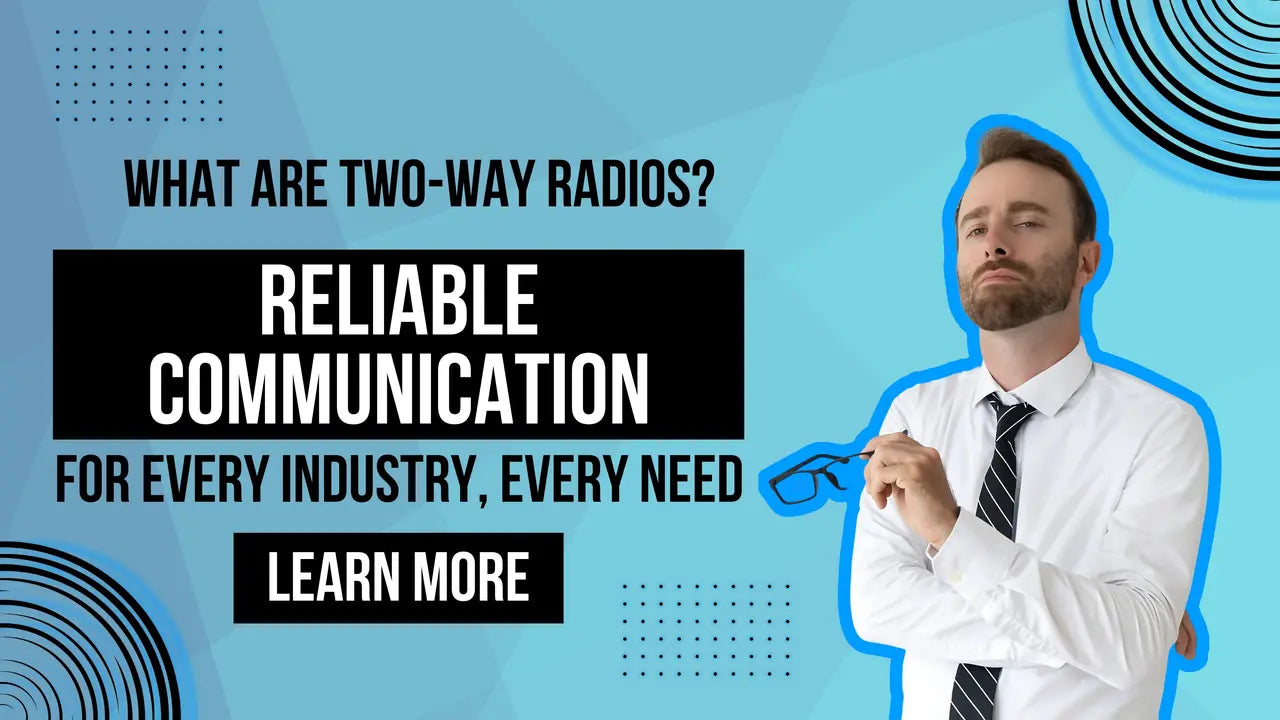In this blog, we’ll break down the basics of two-way radios and explore how they function. Whether you’re a hobbyist or just curious, you’ll find this comprehensive guide engaging and easy to follow.
What Are Two-Way Radios?
Two-way radios are communication devices that can transmit and receive radio waves, allowing users to have conversations over a distance. They’re widely used in various applications, including emergency services, events coordination, and outdoor adventures.
In essence, two-way radios enable a direct line of communication without relying on traditional telecommunication networks. This functionality makes them highly versatile for situations where other forms of communication might fail, such as during natural disasters or remote expeditions. For those interested in learning more about their uses, Two Way Radio Gear offers a variety of options for different needs.
These devices are particularly popular in fields that require instant and consistent communication like construction, security, and retail. In retail environments, two-way radios can empower staff to improve customer service by enabling quick responses and minimizing delays. Explore more about these applications on our Retail Stores page.
Components of Two-Way Radios
A typical two-way radio consists of several key components: a transmitter, receiver, microphone, speaker, antenna, and power source. Each component plays a crucial role in ensuring clear and effective communication.
The transmitter and receiver are the heart of the radio, turning sound into radio signals and vice versa. The microphone captures the user’s voice, which is then sent via the transmitter. At the other end, the receiver picks up these signals and conveys them as sound through the speaker.
The antenna is equally vital, allowing the transmission and reception of signals over vast distances. Power is usually supplied by batteries that provide the necessary energy for these components to function concisely.
Motorola CLP and CLS series radios, known for their compact and reliable design, utilize these components efficiently for seamless communication in professional settings such as retail and hospitality. Find these and more at TwoWayRadioGear.
How Do Two-Way Radios Transmit and Receive Signals?
Two-way radios operate by converting your voice into radio waves through a transmitter. These waves travel through the air and are picked up by a receiver in another radio, which converts them back into sound. This process enables communication between individuals.
The conversion process involves modulating the voice signals into higher frequency signals capable of traversing long distances. The effective range can vary depending on the quality of the device, the environment, and the frequency used.
Understanding this simple yet effective technology illuminates how two-way radios serve essential roles, especially when traditional communication systems are unavailable. This technology is crucial in scenarios ranging from everyday business operations to critical emergencies. For a closer look at deploying these devices in emergencies, explore our Outdoor Recreation and Emergency Preparedness collection.
Different Frequencies and Channels
Two-way radios use different frequencies and channels to avoid interference and enable multiple conversations simultaneously. Understanding how to select and use these channels is essential for effective communication.
UHF (Ultra High Frequency) and VHF (Very High Frequency) are commonly used frequencies, each with its benefits. UHF signals can penetrate through obstacles like walls, making them ideal for indoor use, while VHF signals are better for outdoor communication as they cover more significant distances without barriers.
Selecting the appropriate frequency and channel helps in establishing seamless communication, especially in crowded settings. For businesses looking to enhance their communication, make informed choices by visiting Two Way Radio Gear’s comprehensive guide.
Common Uses for Two-Way Radios
Two-way radios are invaluable in various fields, including construction, security, hospitality, and personal use for hiking or camping. They offer a reliable and cost-effective way to stay connected in environments where mobile phones may not be practical.
In the construction industry, radios facilitate seamless coordination across sites, enhancing safety and efficiency. Meanwhile, security teams rely on robust communication systems to maintain checkpoints and respond swiftly during emergencies.
For outdoor enthusiasts, radios are essential tools for ensuring safety and coordination in remote areas. They provide instant communication, whether for relaying location coordinates or simply staying in touch with companions.
Explore how Two Way Radio Gear supports various industries with specialized products, from school communication solutions to retail efficiency enhancements.
Wrapping Up
In summary, two-way radios have transformed the way we communicate over distances, relying on radio waves to transmit and receive information efficiently. Understanding their components and operation helps us appreciate their value in various scenarios, from emergencies to leisure activities.


